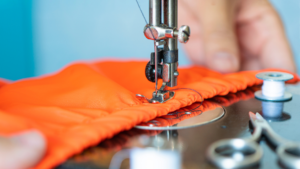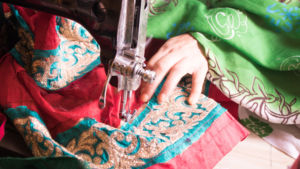Last Updated on October 13, 2021
Sewing fabrics does not only focus on designing and stitching patterns into them. If you want your future sewing projects to have seamless edges, investing in an overcast stitch machine or a serger is a good solution.
Below is a walkthrough of basic information about the overcast stitch sewing machine. Let’s get right into it!
What Is An Overcast Stitch Sewing Machine?
An overcast stitch sewing machine, also known as a serger or overlocker, is a sewing machine that trims and encloses the edge of the fabric being sewn. The terms overlock and serger are interchangeable, and overlocker is the term used mostly in European countries.
An overlocker or serger can make your sewing projects easier, and using an overcast stitch sewing machine can make your sewn fabric more durable. With an overcast stitch sewing machine, you can add professional finishes and seams to the fabric being sewn. This sewing machine is best used for fabrics with thick layers and other heavy-duty materials.
Sergers or overlockers can operate in a high-speed manner, producing approximately 1,500 to 1,700 stitches per minute. There are also industrial sergers that have heavy-duty materials and machines.
Industrial sergers are used to sew or stitch thick and many layers of fabrics. Different types of fabrics are also sewn with a serger, especially those with sequins, upholstery, and denim types.
Sergers or overlockers have knives that are used to cut seams. This type of machine does not replace the sewing machine itself but helps to sew decorative fabrics.
How Does An Overcast Stitch Sewing Machine Work?
This type of sewing machine has special features that other sewing machines do not have. An overcast stitch sewing machine is a type of sewing machine that performs special functions to create different kinds of stitches. Take a closer look at how an overcast stitch sewing machine or an overlocker works.
Feed System
As you feed the fabrics or garments in the sewing machine, it first reaches the feed dogs with jagged metal strips located at the stitch plate beneath the presser foot. These sewing machine components such as presser foot, needle plate, and feed dogs work and move at the same time along with the fabric or garment. Some other sergers or overlockers have a differential feed system that helps to avoid creases and stretched seams and lines.
Cutting System
The allowance in the seams is cut or trimmed by the moveable knife in the sewing machine. The tapestry needles and knives of the overcast stitch sewing machine move at the time and speed.
Loopers
Instead of using several bobbins, the upper and lower loopers are used to form the stitches. However, the looper thread does not penetrate the fabric. The upper and lower loopers with the needle threads lock together at the same time to have finished seams.
Stitch Fingers
Stitches from the sergers are being formed around one or two stitch fingers. It has small projections on the needle plate.
When sewing fabrics and other garments, sergers or overlockers are a big help in stitching decorations, patterns, zippers, and other seams. You might think that serger and regular sewing machines are both the same, but these differ at some points, like using needles, threads, bobbins, and efficiency.
Needles
A regular sewing machine uses only one sewing or tapestry needle, while an overcast stitch sewing machine uses various needles. It also uses a number of threads from two to eight threads.
Bobbins
Since an overcast stitch sewing machine uses a number of needles, it also uses more bobbins. Each sewing needle is attached to two or more threads, which is why sergers need more bobbins.
Efficiency
The more needles used by a serger make it easier and faster to sew and stitch. You will spend less time than using a regular sewing machine.
Design
You can make more decorative designs and patterns using a serger or an overlocker. Decorating unique stitches will only take less of your time.
Tools Needed When Using An Overcast Stitch Sewing Machine
When using an overcast stitch sewing machine, you need tools and other materials to work on it. It is essential to have these tools or materials in hand when sewing with a serger or an overlocker. Listed below are tools you need when using an overcast stitch sewing machine.
- Clover or clips – You can avoid unorganized fabrics by using clips or clovers. It will help the fabrics or other materials together. Do not use cutting knives or any sharp metals when sewing fabrics. It will only damage the pins and can cause the risk of being injured. It is not advisable to sew fabrics over pins and other clips.
- Tweezers – You need to have extra sharp tweezers to make it easier to thread the loopers into the needles and other materials with tight spaces when your fingers cannot reach or maneuver.
- Clear elastics – With the use of clear and narrow elastics, it can add more stability with knitted seams. This works best with lightweight and stretchy knits and materials.
- Needles – When sewing with a serger, the thread chains must be secured or tucked at the back about 1 or 2 inches. This is mostly done with blunt-tipped tapestry needles or large-eye needles.
- Stiletto – This is a pointed sewing tool used to feed the fabric closer to the presser foot and the cutting knife. This sewing tool is important to keep your fingers away, and using an awl can keep your fabrics and materials from continuously moving in the direction you want.
Basic Serger or Overlocker Techniques
Sewing using a serger or overlocker is more than just basic straight stitching. You can sew fabrics and garments with confidence and ease with practice and following some basic serging techniques.
- Curves – Sewing curves are not much difficult to stitch with sergers when you know the proper techniques. Sew slowly as the fabric reaches the presser foot. Be careful not to pull or grab the fabric out of shape. Straighten the curve by moving the fabric towards the left side.
- Corners – When chaining off, continue to sew off the fabric by leaving at least 4 to 5 inches of chain. Choose a finishing method to secure the ends of the threads. For continuous stitching, raise the needle and the presser foot to turn an outside corner. Slip stitches off the stitch finger and spin around the fabric or garment. Lower the presser foot, then turn the flywheel until the needle is ready to go into the fabric and other materials.
- Sewing around edges – This serging technique is also used to repair when a line breaks in stitching. This process or technique is best used for sewing or stitching a piece of fabric or cloth in a circle shape.
Types of Thread Serger
Cutting fabrics and seaming the edges differ when stitching. If you use sergers, you have options to use various numbers of threads, which also differ in their durability.
- 2-4 Thread Serger – This type of serger machine can use two-thread overlocker edges and secure safety for the fabrics being sewn. You can use a 2-4 thread serger to create separate stitches from the other.
- 3-4 Thread Serger – This type of serger machine works or functions with three or four threads. This amount of threads has the capability of seaming stretchy fabric or materials. This thread serger can provide a stronger and wider seam. It uses one needle thus, has less strength. One advantage of this stitch is sewing a blind hem and finishing the raw edges at the same time.
- 4-Thread Serger – It is also called a Mock Safety stitch because of the strength of a seam made with the safety stitch. This type of thread serger is used on medium to heavyweight materials or with fitted garments and fabrics. It is sewn with two threads that sew two rows of stitching the fabric while the looper threads are wrapping in the edges.
- 5-Thread Serger – This type of thread serger is in the expensive range because of its capabilities. Three threads needed to be used on the overlocked edge, and the other two threads were used for the straight seam lines. It also eliminates having to switch between strong seam and seam finish.
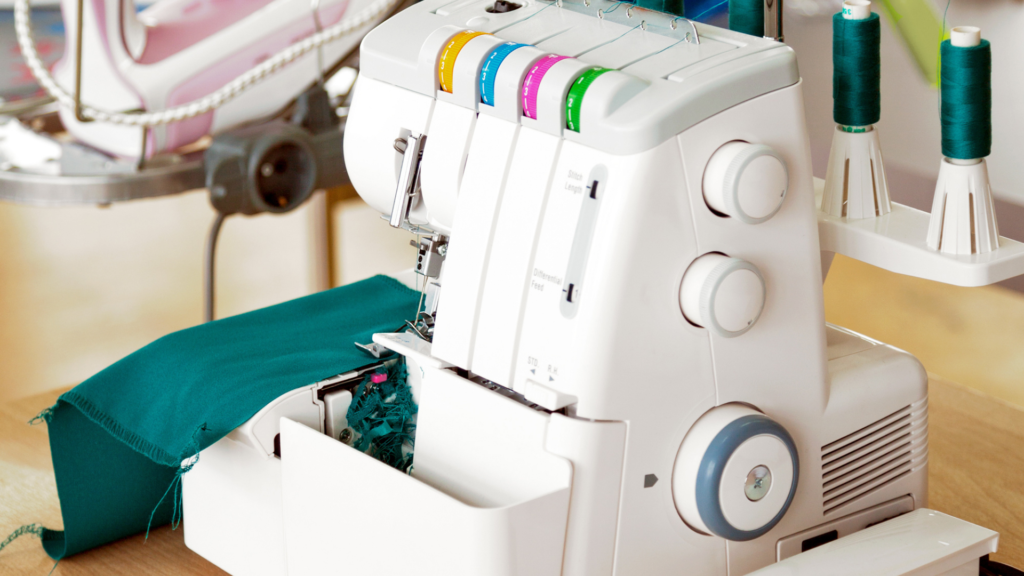
What Stitches Can You Do With An Overcast Stitch Sewing Machine?
Several serger stitches are difficult to be done because of their variations and modifications. However, there are few easy stitches that you can do with an Overcast Stitch Sewing Machine.
- Flatlock – This type of stitch is used when you sew a stretchable fabric. Flatlock has a unique design meant to keep the fabric in place to avoid putting it in the wrong place.
- Two Thread Rolled Edge – This type of stitch is generally used for decorative types of stitches. It is used to sew sheer fabrics and garments or on narrow seams. Also, this stitch is good for putting finishing touches on tablecloths and table napkins.
- Overlock Stitch – This type of thread stitch is the rarest. It has the cleanest finish of edges which looks beautiful and delicate to stretchy and lightweight fabrics.
Tips When Using An Overcast Stitch Sewing Machine
Most of the home sewers are beginners. Here are some effective tips to look into when using a serger machine.
- Clean Your Serger Machine – Since a serger is a trimmer or a cutting tool for fabrics, all materials tend to rub with their parts and create tension with their components. When much tension is made, needles and threads will start to break, and this will cause damage to the machine.
- Use Quality Sewing Threads – A good thread is a must for a serger machine. Threads must be able to withstand washing and stress. You can use polyester and nylon threads when sewing close-fitting clothes or fabrics.
- Don’t Sew On Pins – Most of the time, using pins on fabrics to prevent them from moving is inevitable. However, when you sew fabric over or above the pin, it will damage the serger and lose its sharpness.
- Don’t Trim The Threads Near The Edges – An overcast stitch sewing machine cannot do a backstitch. Using backstitch in a serger will cut new stitches. If you cannot do backstitch, ensure that you add more space allowance from the edge when you cut threads. Keeping the thread ends or chain long is a technique.
- Avoid Hard Pushes – Make sure not to push too hard when sewing curves, corners, and angles. Pushing your feet too much can cause damage and wrong placement of the fabric or garment.
- Match Colors – When sewing, always check the color of the fabric and the needles that you will use. Match or blend the colors of the left needle to the fabric.
- Check The Machine Speed – Sergers or overlockers are mostly in high speed. Check the speed of your machine and sew at a medium speed to maintain sewing steadily.
- Change Threads – When changing sewing threads, always clip the threads near the spools, then change them using an overhand knot.
- Proper Tension – You can adjust the tension of an overcast stitch sewing machine after changing the threads.
- Remove Unused Thread – Remove or unthread the unused threads and needles and make sure that they will not fall inside the serger machine.
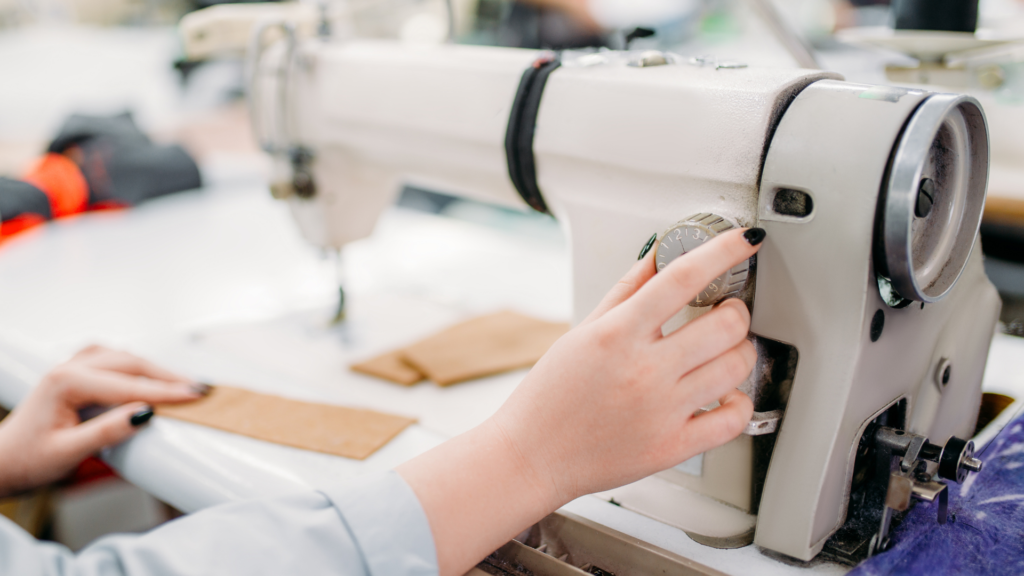
Some Final Words
Overcast stitch sewing machine or serger is a good addition to your home sewing machines where you can accomplish a project. Sergers or overlockers are best at producing high-quality fabrics with more secured seams and edges and produce stronger finishes with decorative stitches.
A lot of technicalities are present when using an overcast stitch sewing machine. But, the information mentioned above will keep your next sewing project look seamless.

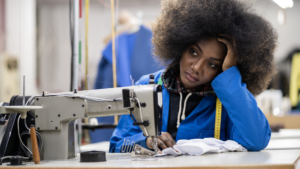
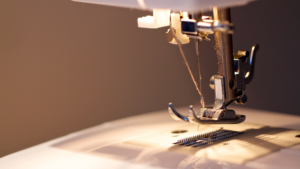
![Read more about the article Your Ultimate Guide On How To Use A Serger Sewing Machine [2023]](https://www.sewkitkit.com/wp-content/uploads/2021/09/serger-Y-300x169.png)
![Read more about the article How to Erase Chalk Markers in 3 Easy Steps [Guide]](https://www.sewkitkit.com/wp-content/uploads/2019/06/how-to-erase-chalk-markers-300x168.jpg)
